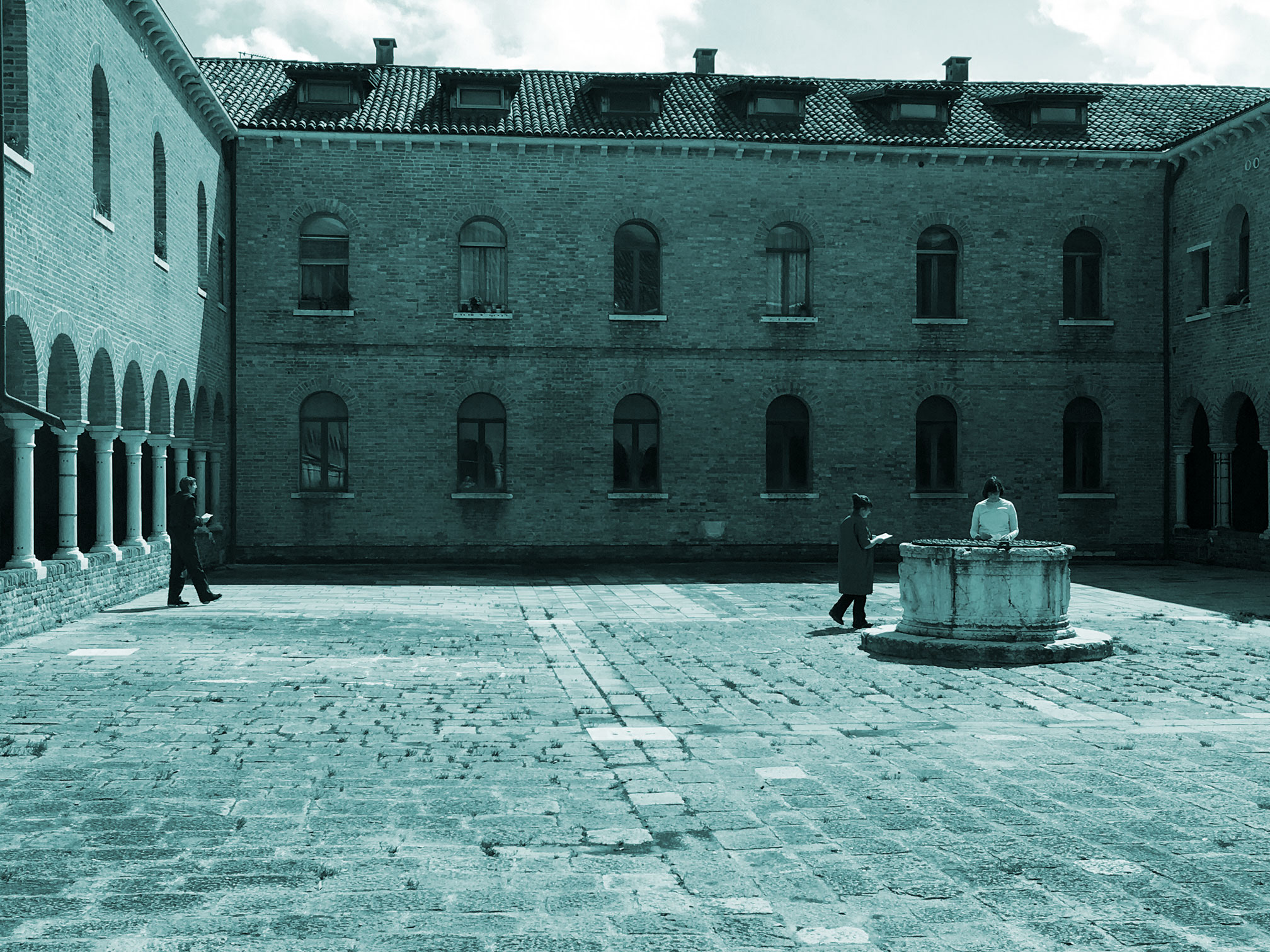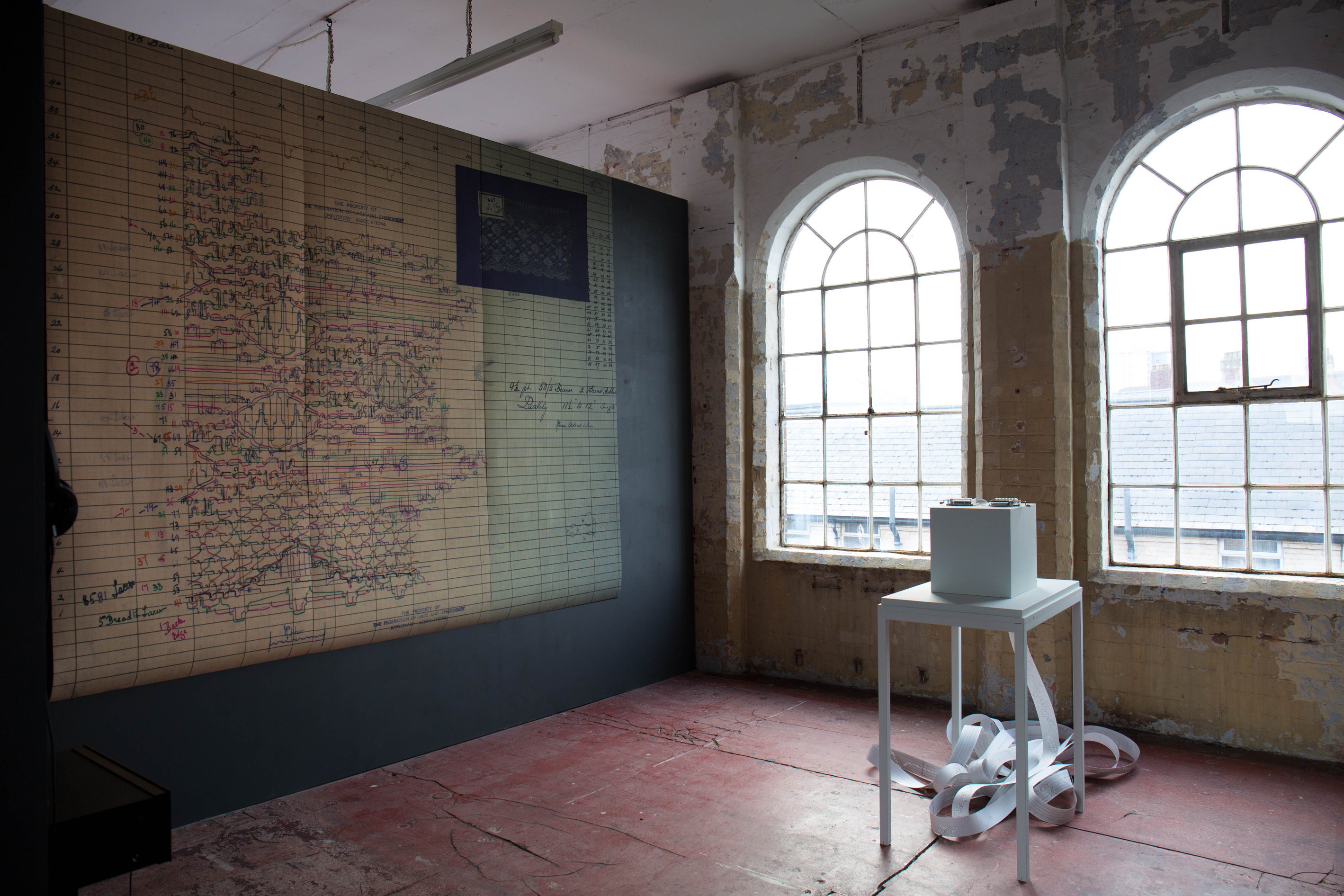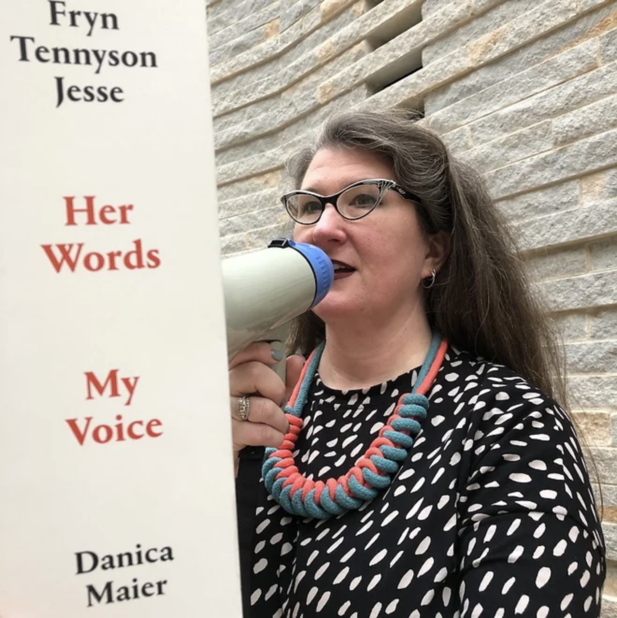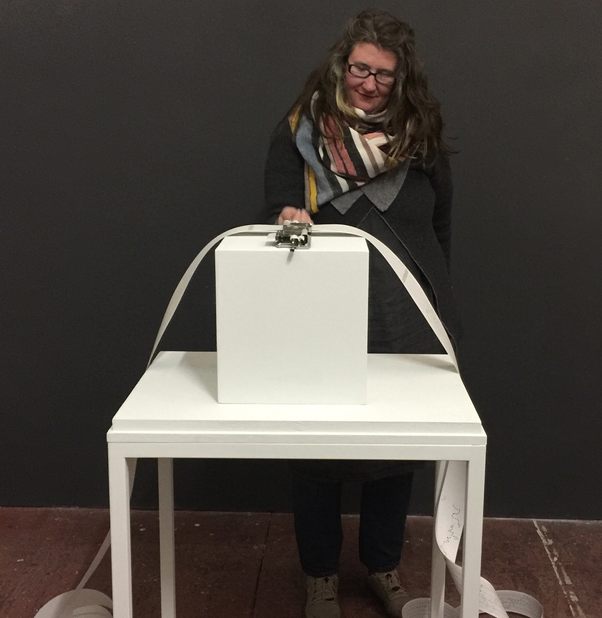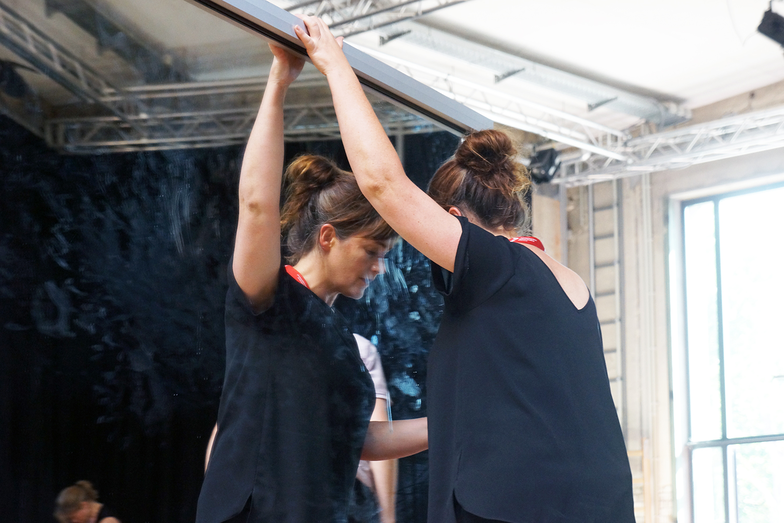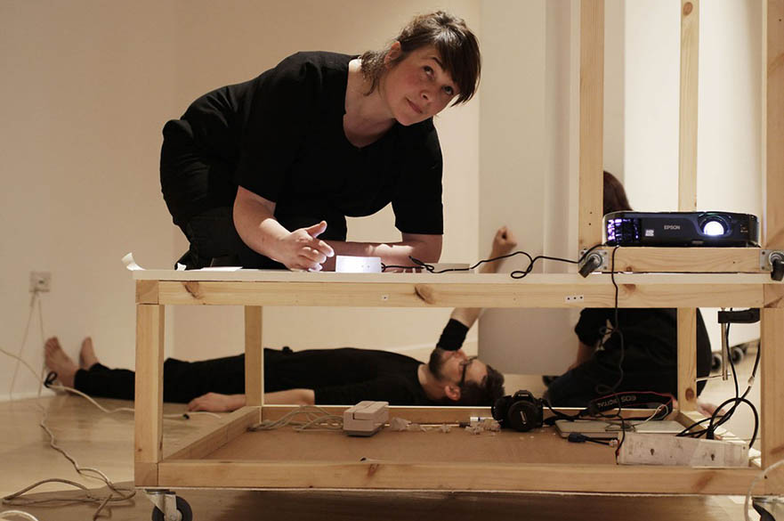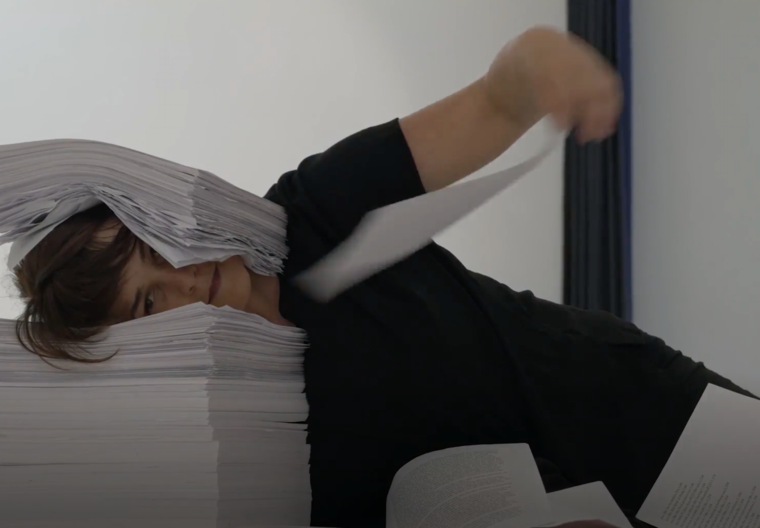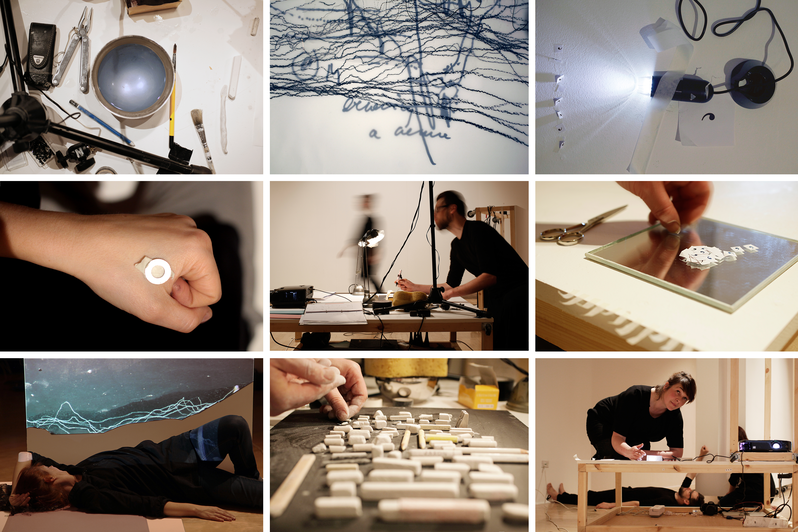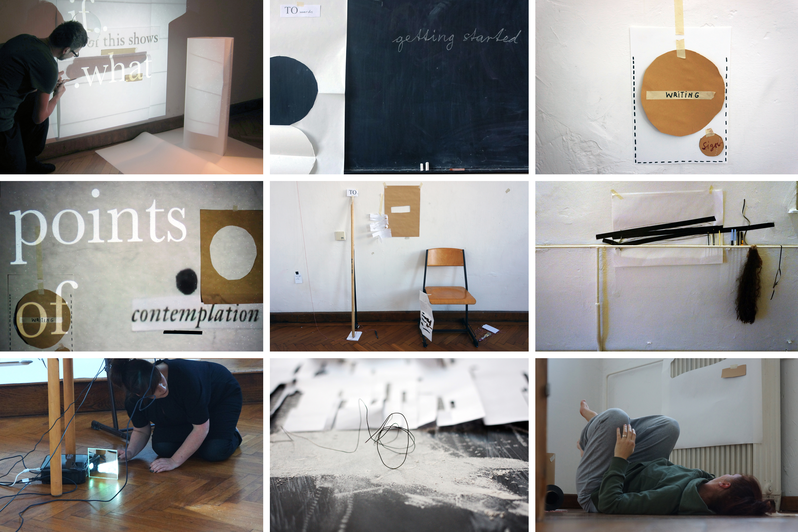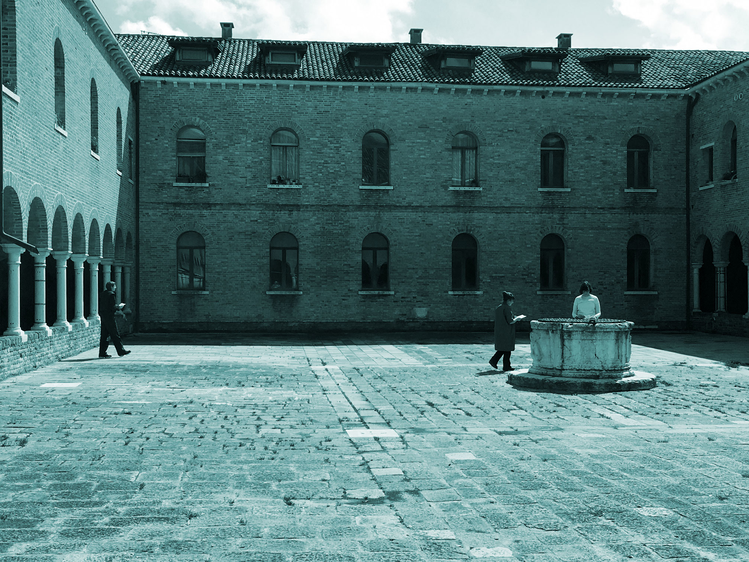PERFORMING PROCESS is co-led by Associate Professors Emma Cocker and Danica Maier. The thematic PERFORMING PROCESS extends and expands concerns and interests from Cocker’s and Maier’s ongoing individual and independently collaborative research projects and publications, as well as from their shared experience of teaching and contributing over many years to an 'open curriculum' within a critical, interdisciplinary fine art programme. See details below.
DANICA MAIER is an artist and associate professor in Fine Art. Danica's practice-based research focuses on the unrepeating repeat, intersemiotic translation of material processes, and how an audience looks/listens. She is also interested in the dialogical nature of collaborative projects that foster independent artwork alongside wider group outcomes. Danica's work uses site-specific installation, drawings and objects to explore expectations while using subtle slippages to transgress propriety. Recent exhibitions and live events include: Bummock: Tennyson Research Centre, The Collection Museum, Lincoln; Score: Mechanical Asynchronicity, The Space at Nottingham Contemporary, Nottingham; Associated Thoughts on Line, as part of the Convocation: On Expanded Language-Based Practices within the Research Pavilion at the 58th Venice Biennale; re-turning, AriSpace Gallery, Stoke-on-Trent. See more here: danicamaier.com. Danica is also a qualified coach and mentor working independatly with artists as well as supporting collegues as part of NTU's Coaching Academy.
EMMA COCKER is a writer-artist and Associate Professor in Fine Art. Emma’s research focuses on artistic processes and practices; on the performing of ‘thinking-in-action’ emerging therein, and the challenge of finding linguistic means adequate to the task of speaking with, through and from that experience. Her writing has been published in Failure (2010); Stillness in a Mobile World (2010); Hyperdrawing: Beyond the Lines of Contemporary Art, (2012); On Not Knowing: How Artists Think (2013); Choreo-graphic Figures: Deviations from the Line (2017), and the solo collections The Yes of the No (2016) and How Do You Do? (2022). She was an invited artistic researcher as part of 'Ecologies of Practice', Research Pavilion, Venice (2019); is co-editor of the Special Issue of the Journal of Phenomenology and Practice on 'Practices of Phenomenological and Artistic Research' (2022), and is co-founder of the SAR Special Interest Group of Language-based Artistic Research.See more.
Thinking aesthetic thinking through aesthetic research practices is an artistic research collaboration between Alex Arteaga, Emma Cocker, Nicole Wendel and Sabine Zahn. Since 2019 they have been working together intensively within a series of exploratory online sessions or even ‘laboratories’, inquiring through specific aesthetic research practices in different media (drawing, video, sound, language, body movement, material encounters, spatial configurations) the concept, performance and conditions of and for a specific form of thinking: aesthetic thinking. The project tests various ecologies of aesthetic research practices — a set of interconnected aesthetic practices in action — which aim to provide conditions for evidence of what aesthetic thinking might be. More here.
Video: Ecology in Action, Alex Arteaga, Emma Cocker, Nicole Wendel and Sabine Zahn. Live practice on zoom. Double click video to open full screen.
Bummock: New Artistic Response to Unseen Parts of the Archive (2015-ongoing) is an artistic research project co-led by Andrew Bracey and Danica Maier. A bummock is the largest part of the iceberg underneath the water’s surface; similarly, archives contain more material than is regularly seen or accessed. In Bummock we choose to bypass the catalogue to engage with materials directly, establishing a ‘controlled rummage’ method as an alternative approach to standard archive access practice. The archive is movable, cyclical, and is not a fixed thing - much like when an iceberg turns, the bummock becomes the tip. The most recent iteration of the Bummock project explores, examines, and creates new artistic research from four years of working with the Tennyson Research Centre (TRC), Lincoln, UK. The artistic outcomes have been exhibited as public artworks as part of the North Kesteven Walking Festival, Waddington; The Hub: A National Centre for Craft and Design, Sleaford; The Collection Museum, Lincoln; Farrington House, Ilse of White. The previous project focused on The Lace Archive with exhibitions at Backlit Gallery, Nottingham; the Ruskin Gallery, Cambridge; and the Constance Howard Gallery, Goldsmiths College, London. See more here: www.bummock.org
Images: Various artworks by Danica Maier from the exhibition Bummock: Tennyson Research Centre as seen in The Collection Museum, Lincoln, 2022.
Dorsal Practices — Murky Back Thinking is a collaboration (ongoing since January 2021) between choreographer Katrina Brown and writer-artist Emma Cocker, for exploring the notion of dorsality in relation to how we as moving bodies orientate to self, others, and world. How does the cultivation of a back-oriented awareness and attitude shape and inform our experience of being-in-the-world? Dorsal Practices — Murky Back Thinking unfolds through practice-based exploration involving the three-fold interrelation of various movement, conversation and reading practices for addressing: How is the embodied experience of a dorsal orientation? What forms of writing/language can be developed in fidelity to these embodied experiences of dorsality? More here.
Video: Dorsal Practices: Etymological Exploration: Katrina Brown and Emma Cocker. Live practice on zoom. Double click video to open full screen.
Score: Mechanical Asynchronicity (ongoing since 2018) is a collaborative project between visual artist Danica Maier and composer Martin Scheuregger. The project takes a single historical lace draft from the Nottingham Lace Archive as the starting point for new live and installation-based visual-musical works. This lace draft would have originally been used to programme a mechanical lace machine – it is, in essence, a set of graphical instructions. For this project, it has been repurposed to create instructions, in the form of traditional notation and graphic scores – for a group of musicians. Overall, the work explores an iterative re-encoding process, embracing imperfection and glitch as an intrinsic part of its aesthetic. Key ideas of transcribing, encoding, and re-encoding are explored through the compositional and graphical interventions from Maier and Scheuregger, and through the musical interpretation by music collective Dark Invention. See more here: www.researchcatalogue.net/view/1107431/1107432
Images: Score: Mechanical Asynchronicity, The Space at Nottingham Contemporary as part of programming for Still Undead; the Nottingham chapter of the Bauhaus Imaginista International project, 2019
Choreo-graphic Figures: Deviations from the Line was an artistic research collaboration involving artist Nikolaus Gansterer, choreographer Mariella Greil, and art-writer Emma Cocker (UK) which stages an interdisciplinary, inter-subjective encounter between the lines of drawing, choreography and writing. The aims were to: (1) To explore the 'thinking-feeling-knowing’ operative within artistic practice, especially produced within collaborative exchange; (2) Explore forms of performativity and notation for sharing and reflecting on this often hidden, undisclosed aspect of the creative process, for making tangible this enquiry. The project unfolded through a series of intensive ‘method labs’ where the key researchers (and invited guests) came together geographically in one place to practice thinking-moving relationally and to develop singular and sharable forms of practice-as-research. More here.
Images: Emma Cocker, Nikolaus Gansterer and Mariella Greil, Documentation from Method Labs, Choreo-graphic Figures.
Returns (ongoing - since 2013) with Andrew Brown, Joanne Lee, and Christine Stevens. Working under the title Returns, the group initially came together during a 2012 residency at the former Spode ceramics factory hosed by Bergen Academy of Art. (see: topographies.uib.no) Since then, it has repeatedly returned to investigate Stoke-on-Trent, urban landscapes, diverse communities, manufacturing and craft skills, and material history. Working both collaboratively and independently the group has developed new ideas through idiosyncratic fieldwork, walking, looking and listening - each following the threads emerging from their previous research. In a recently ACE-funded project Danica used found and sourced materials made by the now defunct Spode factory – ceramic components, decorative motifs – in works that engage with a number of conceptual and material oppositions. Some of these, such as the modulation of value in found art objects, and art vis a vis craft practices, activate in the work relevant themes in critical discourse. Others, such as the relationship between drawing and ceramics, have specific resonance with the sourced materials. Danica’s artwork within these oppositions combines embodied, performative, and formal exploration through constructions that trouble conventional hierarchies of practice – a drawing becomes the table for a tea set and pattern spills from the milk creamer onto the wall; highly ornate elements contradict the purpose of their functional design.
Images: Danica Maier, Nesting: Milker with Titbit behind, at AirSpace Gallery, Stoke on Trent, 2018.
Danica Maier’s passion and interest in doing as well as providing the conditions for experimentation focused on process(es), and supportive structures which foster the creative process and practice research has led to her involvement with several residencies over 20+ years.
Danica founded and ran the Summer Lodge (2009-2019) a two-week artists residency focused on process and collective community held within the Nottingham Trent University Fine Art studios. She ran the Winter Lodge (2011-2019), a short retreat within the Derbyshire Peake district focusing on support and development within a small collegiate community. During Covid years with artist Louisa Chamber, Danica set up and ran The Virtual Residency (2020-2021), which included three short intensive online residencies with a collection of 6 national and international artists in each group. Danica co-led with Emma Cocker the No Telos (2017) project which focused on a short intensive residency based in Venice. Recently Danica was invited by The Museum of Loss and Renewal to co-led Drawing into Being (2022) a one-week intensive group drawing residency.
Alongside leading residencies Danica has also undertaken a number of international residencies including: Hospitalfield (2019), Arbroath, Scotland; Textile Archive, (2014), The Collection Museum, Lincoln; Topographies of the Obsolete, (various times during 2012-2013), Spode Factory, Stoke on Trent; Braziers International Workshop, (2005) Oxfordshire; Fundación Migliorisi, (2005), Asuncion, Paraguay; VASL (2004), Karachi, Pakistan with Gasworks London; Fabric Workshop and Museum, (2000) Philadelphia.
Images: Experiments and tests during Topographies of the Obsolete (2014) residecy and Summer Lodge (2014).
Reading on Reading was a research enquiry developed collaboratively by Emma Cocker, Cordula Daus and Lena Séraphin whilst working together in the Research Pavilion #3, Venice, 2019, for exploring what alternative modes of sense making are produced when reading is undertaken artistically, as an aesthetic activity. The process of eading was explored as a practice for not only organising the relation of the reader to a text read, but also as a micro-political or ethico-aesthetic practice through which to re-consider — perhaps even re-organise — the relations between self and other(s), self and world. How can aesthetic practices of reading: (1) Shed new light on the phenomenology (or how-ness) of reading? (2) Transform the often-solitary activity of reading into a shared or communal act — and explore what modes of sociality, solidarity and emergent ‘we’ arise therein? (3) Operate as a disruptive process, unsettling normative conventions of reading through focus on the poetic, affective and material dimensions of readerly experience? More here.
Image: Emma Cocker, Cordula Daus and Lena Séraphin, Reading on Reading, Venice 2019.
Danica’s practice-based research focuses on the use of the ‘unrepeating-repeat’ (or iterative variants) as a tool to implement Ludwig Wittgenstein’s ‘aspect seeing’. She is interested in different perspectives and understanding simultaneously being held within a work and how an audience may see/hear or engage with these or not. Her research utilizes drawing, assemblages, and site-specific works to create both small and large scales work that engage appropriation as part of process. Danica works with archives, collection, found historical/retro and person items as the starting point while the subject of the artworks involves personal narrative and explorations of memory. With a background and degrees in both Fine Art (painting BFA, MFA) and Textiles (MA) Danica’s research engages Roman Jakobson’s ‘intersemiotic translation’ to simultaneously explores practical methods/process between these fields bringing them together as one in a rhizomatic and non-hierarchical approach.
see more here: www.danicamaier.com
Images: Skein, 2014, drawing and historical samplers from the Collection and Usher Gallery's collection.
The Italic I was a collaborative project (2014 — 2019) by writer-artist Emma Cocker and artist Clare Thornton that explores the different states of potential activated by purposefully surrendering to the event of a repeated fall. Within The Italic I the act of falling is slowed and extended through the use of both lens and language, as a means for attending to its different phases or ‘scenes’. The motif of falling becomes the foil for reflecting on the undisclosed, unnamed, or even invisible episodes within artistic endeavour, the various tipping points between thinking and action. The Italic I publication marks the culmination of a performative-poetic enquiry comprising photographic performance-documents presented alongside a textual lexicon generated in the ‘free-fall’ of conversational exchange. More here.
Video: Emma Cocker and Clare Thornton, The Italic I
For over a decade, Emma has been developing two core writing practices for exploring: How is the being-in-the-midst of thinking-in-action within artistic-aesthetic practice, the event of thinking-through-doing, or thinking with-and-through practice? How might I write with, from within or through practice; indeed, how can writing be conceived as an aesthetic research practice? (1) Contiguous writing: an approach to art-writing as a research practice: not a writing about, but rather a thinking-with or writing-with, writing alongside or in touch with another’s practice. Selections of this writing have been gathered in Emma's solo collections The Yes of the No (2016) and How Do You Do? (2022). More here. (2) Conversation-as-Material: Comprising a quadriparite process of conversation, transcription, distillation and presentation,a language-based artistic research practice for attempting to speak from within the experience of collaborative artistic exploration. More archive of conversation-as-material here.
